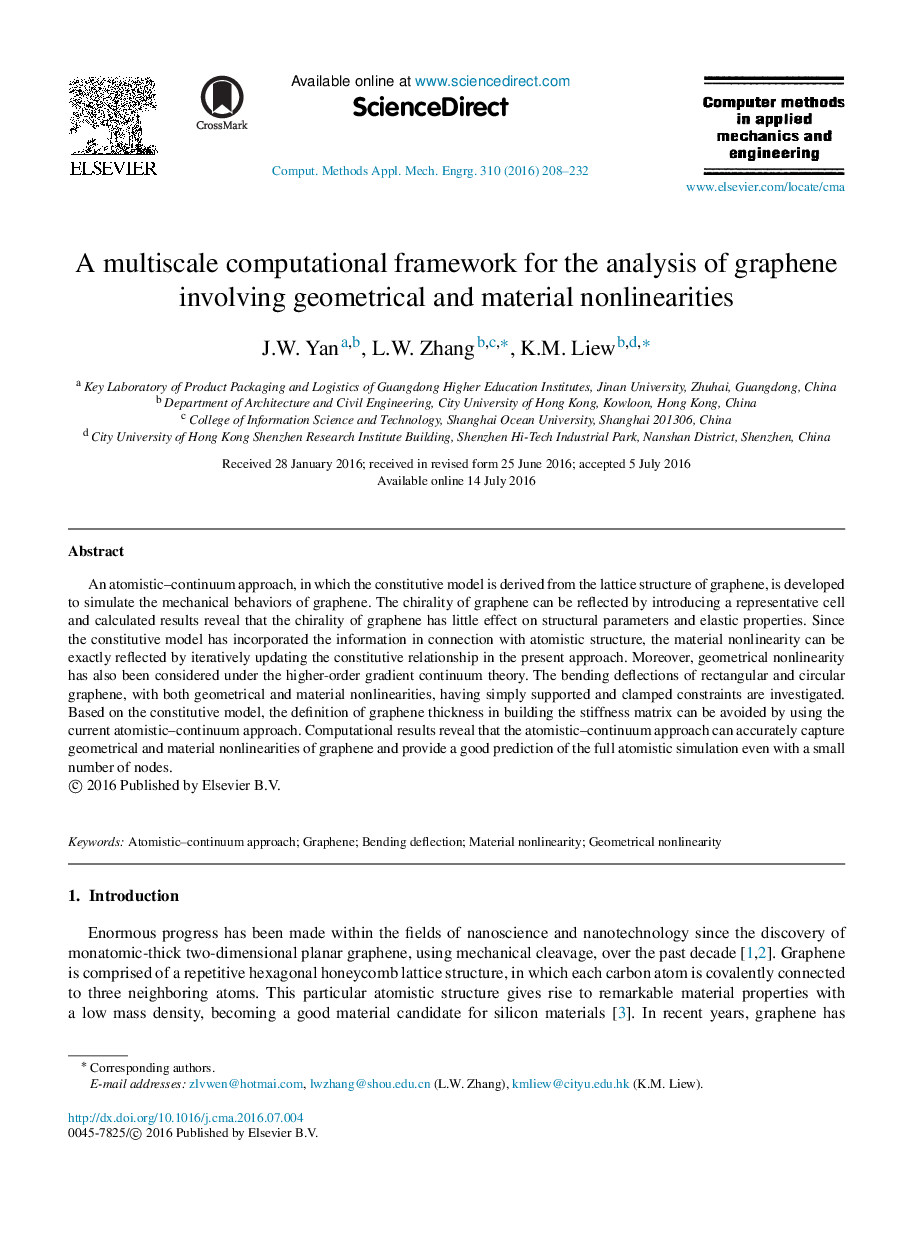| Article ID | Journal | Published Year | Pages | File Type |
|---|---|---|---|---|
| 497581 | Computer Methods in Applied Mechanics and Engineering | 2016 | 25 Pages |
An atomistic–continuum approach, in which the constitutive model is derived from the lattice structure of graphene, is developed to simulate the mechanical behaviors of graphene. The chirality of graphene can be reflected by introducing a representative cell and calculated results reveal that the chirality of graphene has little effect on structural parameters and elastic properties. Since the constitutive model has incorporated the information in connection with atomistic structure, the material nonlinearity can be exactly reflected by iteratively updating the constitutive relationship in the present approach. Moreover, geometrical nonlinearity has also been considered under the higher-order gradient continuum theory. The bending deflections of rectangular and circular graphene, with both geometrical and material nonlinearities, having simply supported and clamped constraints are investigated. Based on the constitutive model, the definition of graphene thickness in building the stiffness matrix can be avoided by using the current atomistic–continuum approach. Computational results reveal that the atomistic–continuum approach can accurately capture geometrical and material nonlinearities of graphene and provide a good prediction of the full atomistic simulation even with a small number of nodes.
